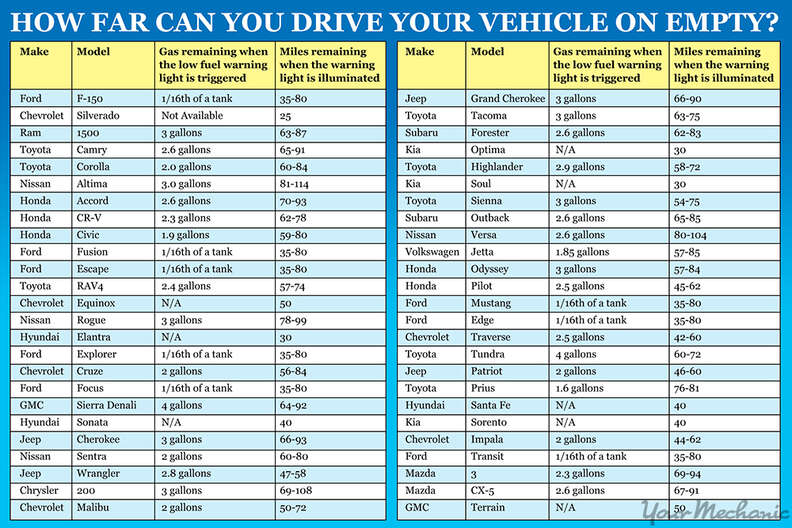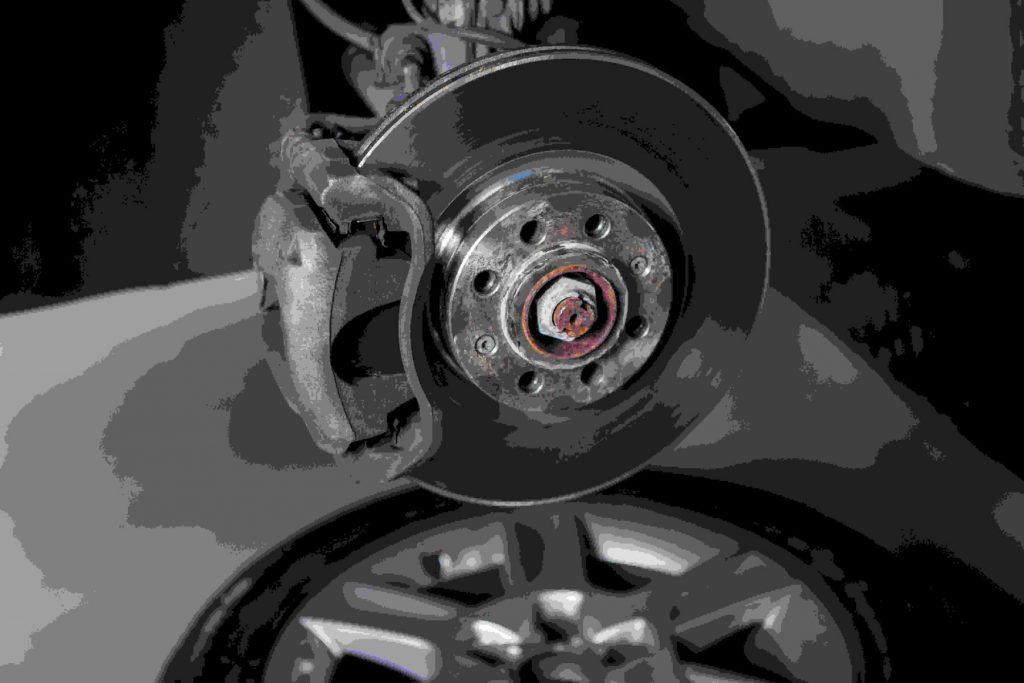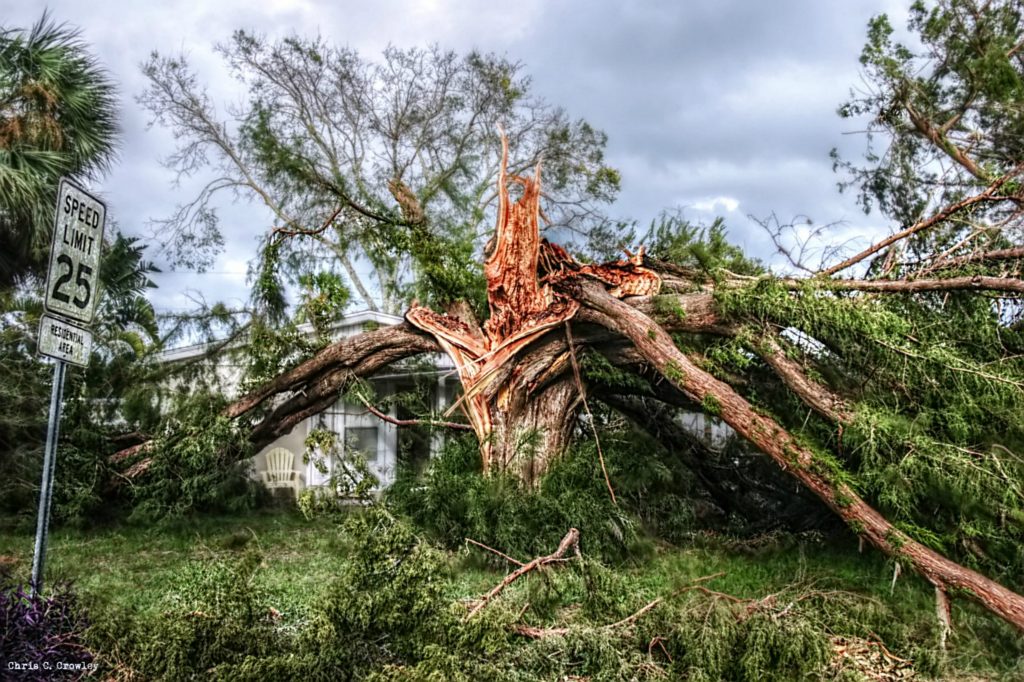Picture this: you’re navigating the busy Sharjah roads on your way home when the dreaded low fuel light flickers on. Every driver in the UAE has likely experienced that moment of uncertainty. Can I make it to a gas station, or will I end up stranded? As an auto maintenance team in Sharjah, we often get asked how far a car can really go once the gauge hits “E.” In this article, we at Burj Malabar Auto Maintenance will explore exactly that – how much reserve fuel you typically have, how different vehicle types handle running on empty, and why it’s best not to push your luck. We’ll also share some practical tips to avoid getting caught out with an empty tank. By understanding the facts and risks about driving on empty, you can save yourself from inconvenience, mechanical trouble, or even dangerous situations on the road. Let’s fuel up on knowledge so you’re not running on fumes when it matters most.
How Far Can You Drive on an “Empty” Tank?
When your car’s fuel gauge points to E (Empty) or the low-fuel warning light comes on, it’s natural to feel anxious. The good news is that “empty” usually doesn’t mean completely empty – most vehicles have a reserve built into the tank. In fact, the low-fuel light typically illuminates when there’s around 10% to 15% of fuel capacity left. In other words, your tank isn’t bone-dry the moment the warning light blinks on – it’s giving you a heads-up. For example, a Toyota Corolla with a 13-gallon (50 L) tank might have roughly 1.3–1.9 gallons (5–7 liters) remaining when the light comes on, which could allow another 50–100 km of driving depending on conditions.
So, how far can you really go on “empty”? According to research, the average car can travel about 49 miles (≈79 km) after the fuel light comes on. Put simply, most drivers have dozens of kilometers of leeway once the warning light illuminates. As a general rule of thumb, it’s usually safe for about 30–50 miles (50–80 km) of additional driving on low fuel. Some vehicles, especially larger models with big fuel tanks, can even stretch to around 80 miles (≈130 km) on reserve. However, these figures are highly variable – your actual range will depend on your car’s fuel efficiency, tank size, driving speed, and even how well the vehicle is maintained.
To illustrate, here’s a comparison of common vehicle types in Sharjah and roughly how far each might go once the fuel light comes on. (These are estimates assuming typical tank sizes and fuel economy for each category, and moderate driving conditions):
| Vehicle Type (Examples) | Fuel Reserve Left(approx. liters when low-fuel light turns on) | Possible Distance on Reserve(km / miles, approximate) |
|---|---|---|
| Compact Car (Hatchback) – e.g. Toyota Yaris, Nissan Tiida | ~5–7 L (about 10–15% of a ~45 L tank) | ~60–80 km (≈35–50 mi) |
| Sedan – e.g. Toyota Camry, Honda Accord | ~6–9 L (10–15% of a ~55–60 L tank) | ~50–70 km (≈30–45 mi) |
| SUV/Crossover – e.g. Nissan Patrol, Toyota Land Cruiser | ~8–12 L (10–15% of a ~80 L tank) | ~40–60 km (≈25–40 mi) |
| Pickup Truck – e.g. Toyota Hilux, Ford F-150 | ~8–12 L (10–15% of a ~75 L tank) | ~50–80 km (≈30–50 mi) |
| Van/MPV – e.g. Toyota Hiace, Mitsubishi Xpander | ~7–10 L (10–15% of a ~65 L tank) | ~40–60 km (≈25–40 mi) |
*Note: Actual ranges will vary by specific model, engine, driving habits, and conditions. Always treat these figures as rough estimates, not guarantees.
As you can see, all common vehicle types – from small hatchbacks to large SUVs – typically have at least a few dozen kilometers of cushion once the fuel warning light comes on. Smaller cars tend to use less fuel per kilometer, so even though their tanks and reserves are smaller, they often can travel on the higher end of these ranges. Larger SUVs or performance vehicles usually guzzle more fuel, so their bigger reserve might not take them much farther in terms of distance. For instance, a fuel-efficient hybrid or compact might surprise you by going further on “empty” than a gas-guzzling V8 SUV. However, regardless of what you drive, we strongly advise against intentionally testing these limits. Manufacturers design that buffer to help you reach a petrol station in a pinch – it’s not an invitation to routinely drive on fumes.
The Dangers of Driving on Empty
While it’s reassuring that you likely have some buffer when the tank is low, relying on it too often can lead to serious problems. Running your vehicle on an almost empty tank is risky for both your car’s health and your safety. Here are the major dangers to consider if you habitually drive on empty:
- Mechanical Damage: Constantly running near-empty can harm critical fuel system components. Over time, sediment and debris settle at the bottom of your fuel tank. When fuel is very low, the fuel pump may start drawing in that gunk, which can clog your fuel filter or even enter the engine. This can reduce engine performance or cause damage. Moreover, many cars use an electric fuel pump that sits inside the tank, which relies on the fuel itself for cooling. If the fuel level drops too low, the pump isn’t fully submerged and can overheat, wearing out the fuel pump faster. In our experience at Burj Malabar, fuel pump failures are often linked to drivers consistently running the tank to near-empty – an expensive fix that is easily avoidable.
- Sudden Breakdowns: If you push it too far, you risk running completely out of fuel and stalling. A car that sputters to a stop in the middle of traffic is not only inconvenient – it’s dangerous. Losing engine power means losing power steering and brake assist, making it harder to maneuver to safety. Running out of petrol on the road can lead to serious accidents if other motorists don’t notice you in time. In the UAE, authorities warn that even though there’s no specific fine for an empty tank, stopping and obstructing traffic is an offense – you could face a fine (for example, AED 200 for blocking traffic, or AED 500 + black points if your car stops in the middle of the road). Beyond fines, think of the scenario: being stranded under Sharjah’s scorching sun on a highway shoulder is the last place you want to be.
- Stranding and Inconvenience: Even if an accident is avoided, being stranded without fuel is a major hassle (and in Sharjah’s summer heat, potentially dangerous for you as well). You might have to wait for roadside assistance or a friend to rescue you with a jerry can. In worst cases, an empty tank in a remote area could leave you vulnerable or cause you to miss important appointments. Considering there’s no shortage of petrol stations in Sharjah and the UAE, running out of fuel is an easily preventable problem that isn’t worth the trouble it brings.
In short, while modern cars are forgiving when fuel gets low, driving on empty should be an emergency exception, not a habit. The costs – from vehicle damage to safety risks – far outweigh the few extra kilometers you might squeeze out.
Smart Fueling Habits and Tips to Avoid Running Out
Now that we know how far we might go on reserve and why running on empty is a bad idea, the next question is: what can drivers do to avoid ever getting into a sticky “out-of-fuel” situation? We recommend the following smart habits and tips for Sharjah motorists (and all UAE drivers) to stay safe and protect their vehicles:
- Refuel Early: Don’t wait for the warning light as your cue. Make it a rule to fill up when your tank is about quarter full. UAE traffic authorities advise not to wait until the fuel signal comes on – ideally, top up when you still have 1/4 tank remaining. This practice gives you a comfortable buffer and reduces stress. Plus, during long inter-emirate drives (say, from Sharjah to Abu Dhabi), fueling early ensures you won’t be caught far from a station.
- Drive Efficiently When Low: If you do find yourself running low, conserve every drop. Maintain a steady, moderate speed and avoid hard acceleration or high revs, as aggressive driving burns fuel faster. Keeping a light foot on the throttle can significantly stretch your remaining range. It’s also wise to turn off any fuel-hungry accessories if possible. (For example, in mild weather you might switch off the AC to reduce load, but only if it’s safe – in extreme heat your safety and comfort come first.)
- Stick to the Right Lane: On highways or fast roads, move to the rightmost lane when fuel is low. This isn’t to save fuel, but for safety – if the engine does cut out unexpectedly, you’ll be able to coast onto the shoulder quickly. It’s much safer to cruise at a slower pace on the right, where you have an escape, than to risk stalling in the middle lanes of Sheikh Mohammed Bin Zayed Road. We’ve all seen those scenes where a car is stopped in a live lane – you don’t want that to be you.
- Know When to Pull Over: If you start feeling the car sputter, lose power, or “cough”, don’t try to eke out a few more kilometers. Pull over immediately to a safe spot (the hard shoulder or a parking area) while you still have momentum. Once stopped, turn on your hazard lights. It’s also recommended to place a reflective warning triangle behind your vehicle to alert other drivers (especially at night). Then, call for help – a friend, a towing service, or in an emergency, the authorities. It’s far better to get a small amount of fuel delivered to you or have your car towed than to risk an accident or damaging the engine by cranking a bone-dry tank repeatedly.
By following these tips, you’ll greatly reduce the chance of ever being stranded by an empty tank. You’ll also be doing your car a favor – keeping the tank at least partially filled can help prolong the life of your fuel pump and keep the fuel system cleaner (since you avoid sucking up the dregs from the bottom of the tank). In our daily operations at Burj Malabar Auto Maintenance, we always remind our customers that a little caution and forethought with refueling can save a lot of trouble down the road.
Fuel Up for Peace of Mind
Driving with the low fuel light on is a gamble that might occasionally pay off in the short term, but the long-term consequences make it a losing bet. Yes, most cars in Sharjah can roll for an extra 50–80 km after “Empty” thanks to built-in reserves, but pushing those limits is never wise. You risk costly damage to your engine and fuel pump, unwelcome breakdowns in inconvenient or dangerous places, and even fines or accidents due to a stalled vehicle. The bottom line is simple: don’t drive on empty if you can help it.
As a driver in the UAE, you have the advantage of abundant fuel stations and relatively short city distances – so take advantage of that by refilling before your car is screaming for fuel. Develop the habit of keeping your tank above the quarter mark and listening to your vehicle’s warnings. Your car will reward you with a longer life and more reliable performance, and you’ll enjoy the journey without the anxiety of “will I make it?” hanging over you.
At Burj Malabar Auto Maintenance, we are dedicated to keeping you safe on the road. Preventive care isn’t just about oil changes and tire pressure – it also means not running your fuel down to the fumes. By driving smart and fueling up in time, you’ll avoid a host of problems. And if you ever do face an issue (whether it’s a stressed fuel pump from past habits or any other maintenance need), we’re here to help with honest advice and expert service.



